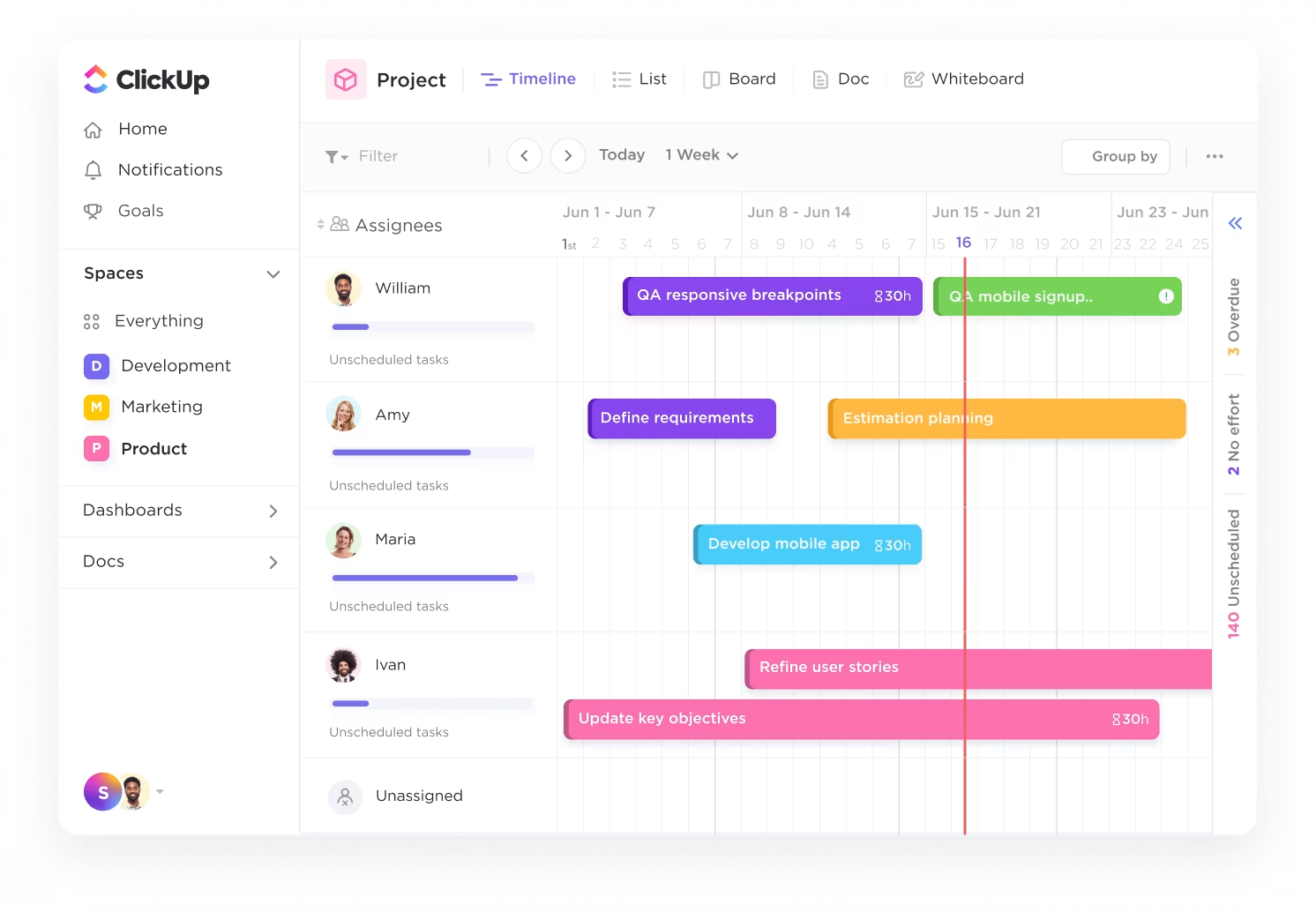What are Story Points?
Story points are a unit of measurement used in Agile project management to estimate the effort, complexity, and uncertainty involved in completing a task or user story. Instead of focusing on hours or days, story points represent relative difficulty—helping teams think beyond time and consider factors like dependencies, technical challenges, and unknowns.
This approach matters because it shifts the focus from speed to value. By estimating in story points, teams build a shared understanding of effort, improve sprint predictability, and avoid burnout caused by unrealistic time-based targets.
Over time, tracking story points helps teams:
- Measure and improve velocity (average points completed per sprint)
- Identify bottlenecks or capacity issues early
- Plan more accurate sprints and releases
- Promote collaboration and ownership across roles
How to calculate Agile Story Points?
Story points are a way to estimate the effort and complexity involved in completing a task or user story in Agile project management. Rather than estimating time, teams assign points based on four key factors: complexity, risk, effort and team familiarity
This Agile Story Points Calculator makes it easy to break down and quantify each factor.
Here’s how you can use it:
Begin by selecting values for attributes like
- Complexity: How technically challenging is the task?
- Risk: Are there unknowns or potential blockers?
- Effort: How much work is needed to complete it?
- Team familiarity: How familiar is the team with the technicalities?
Add Additional Factors
For a more accurate estimate, include advanced parameters like:Dependencies, Testing and integration complexity & Review cycle effort.
View the Final Score
Once you've selected the appropriate levels for each factor, the app instantly calculates a story point estimate using a weighted model. This gives you a consistent, transparent, and objective way to size stories—no more subjective debates or guesswork.
Use this tool before sprint planning to align your team and speed up estimation meetings.
Benefits of using Story Points over Time Estimates
Story points provide a more realistic and flexible way to plan and track work compared to traditional time-based estimates. Instead of guessing how many hours a task will take, teams focus on relative effort, reducing bias and improving long-term accuracy.
Here’s why story points work better:
- Reduce estimation stress: Teams avoid the pressure of time-bound promises and focus on completing valuable work
- Account for complexity: Points capture effort, risk, and uncertainty—not just duration
- Improve sprint predictability: Velocity trends (points completed per sprint) make it easier to forecast future work
- Promote team alignment: Story points encourage discussions around what “complexity” means, leading to shared understanding
- Adapt to change: As teams gain experience, their estimation accuracy naturally improves—without resetting time assumptions
All-in-one platform
Upgrade to a Powerful Agile Management Tool
Easily manage product roadmaps, backlogs, sprints, and more with ClickUp for Agile teams.
✅ Agile dashboards and sprint reporting
✅ Native Git integrations and no-code automation
✅ Workflows for Scrum, Kanban, and more

You just worked out story-point values for your tasks—now build a full sprint plan around them. With ClickUp’s Free Agile Sprint Planning Template, you can turn those estimates into a structured, trackable cycle of execution.
Map your backlog, assign tasks based on point values, monitor sprint progress, and adjust in real time—all in one place.
Whether your team is five or fifty, ClickUp helps you:
- Plan each sprint using calculated story points so you know what you’re committing to
- Visualize work through backlog lists, boards, and timelines to keep everyone aligned
- Assign owners, set deadlines, and link story-point data across tasks for clarity
- Automate status changes and alerts so your plan evolves with your team’s actual pace
Frequently Asked Questions
Other free tools to try
Must read





